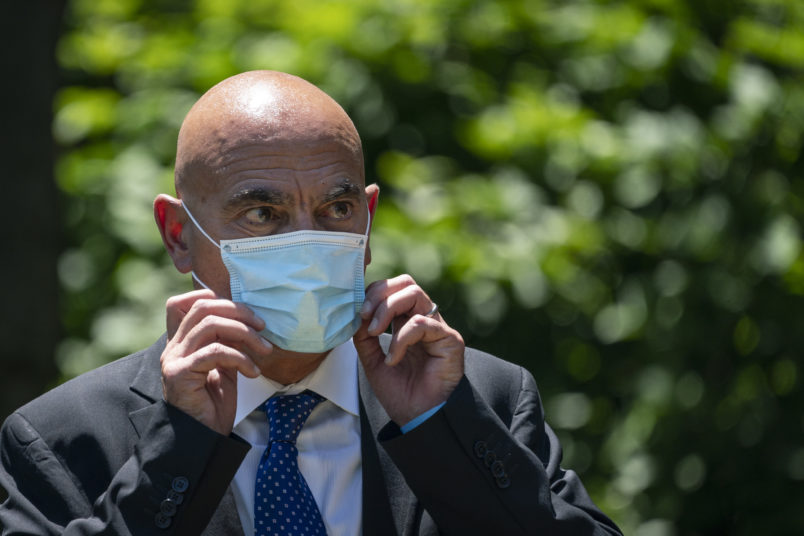Operation Warp Speed is likely to miss the first distribution target that was set, Trump administration officials said last week, saying getting vaccines to people was “slower than we thought it would be”.
Trump administration officials have pledged to vaccinate 20 million Americans by the end of 2020, meaning that 40 million doses would be distributed by January 1.
But General Gustave Perna, chief operating officer of the Trump administration’s effort to accelerate vaccine development, said the government would have allocated only 20 million doses by January 1 – far less than promised.
“We have allocated 15.5 million doses of vaccine and we are on track to allocate another 4.5 to 5 million next week, which will lead us to 20 million doses of vaccine allocated to America before the end of the year,” said Perna on December 23 briefing with reporters. “We will finish these deliveries in the first week of January.”
Perna’s comments suggest that the Trump administration will not complete delivery of half of its projected vaccine estimate until the first week of January. State and local governments will then oversee the distribution of the vaccine.
It is an impressive reduction in the ambition and scale of the effort, which has achieved unprecedented success in accelerating vaccine development, but is delaying to put vaccines in people’s arms.
And that happens at a time when Trump administration officials boast of the mass availability of the vaccine within a timeframe that medical supply chain experts say is unrealistic.
In November, Health and Human Services Secretary Alex Azar said 40 million doses of the vaccine would be available by the end of December – “enough to vaccinate about 20 million of our most vulnerable Americans.”
Since then, Azar and other senior officials of the Trump administration have reiterated that estimate, while also unveiling an unrealistic timetable for the wide availability of the vaccine.
Azar said the vaccine could be widely available as the flu vaccine in February, while HHS Deputy Secretary for Health Admiral Brett Giroir said the majority of the population could be vaccinated in late spring.
These promises create expectations that cannot be met by the new Biden government. Lower-level officials at Operation Warp Speed contradict the optimistic schedule presented by high-ranking officials.
Moncef Slaoui, chief of Operation Warp Speed, made similar comments to Perna at the December 23 briefing, outlining the Trump administration’s initial commitment
On December 2, Slaoui said he was “confident” that the government would be able to vaccinate 20 million Americans by December 31 – a task that requires 40 million doses.
“And by the end of February, we will have potentially immunized 100 million people, which is really about the size of the population at significant risk, the elderly, health professionals, first-line workers, people with comorbidities,” he added .
But on December 23 – less than three weeks later – Slaoui said that “the commitment we can make is to make the vaccine doses available”.
He added that “that commitment was fulfilled”, but that receiving “gunshots” was “slower than we thought it would be”.
“That goal has not been achieved,” said Slaoui.
Cracks showed both the ability of Operation Warp Speed to deliver the weekly cadence of the vaccine that the Trump administration promised states and the capacity of overburdened state and local public health departments to quickly inject the injections.
In the first week of distribution, states complained that their allocations were cut and Pfizer, the maker of one of the two vaccines currently available, said it had millions of doses in its deposit awaiting distribution orders.
Separately, state health officials said that, in the absence of additional funding, they will not be able to quickly distribute the injection itself – especially when it comes to mass vaccinations scheduled for spring and summer.
President Trump signed relief legislation on Sunday that allocated at least $ 4.5 billion to state and local public health departments to distribute the vaccine. This will help states meet demand for vaccines, although some experts say the lack of funding until this week – combined with the time it will take to distribute the money allocated by Congress – has already caused delays.
Perna, the general of Operation Warp Speed, said some problems were caused by quality control checks on vaccine shipments.
“We had to adjust our deadlines,” said Perna.
An HHS spokesman did not return a request for comment.
